Some of my exposed root pines are close to seven years old. They have long sacrifice branches to help thicken the roots.
Although the fastest way to thicken the roots will be to let the tree grow freely all summer, I often prune this time of year to improve the branch structure. As an added benefit, pruning reduces the space each tree takes up which makes room for more trees!
In general, I want the sacrifice branches to grow quickly and I want the future primary branches (the branches that emerge from the trunk) to grow slowly. To accomplish this, I thin the sacrifice branches by removing all but the strongest shoots, and I decandle or remove overly vigorous primary branches. Here’s what this looks like.
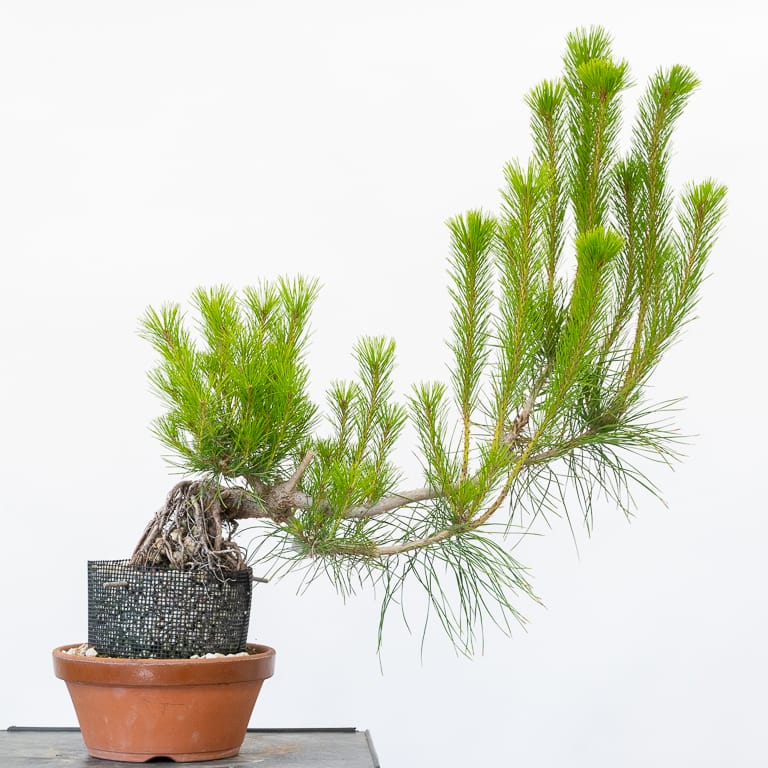
Exposed root red pine with sacrifice branches
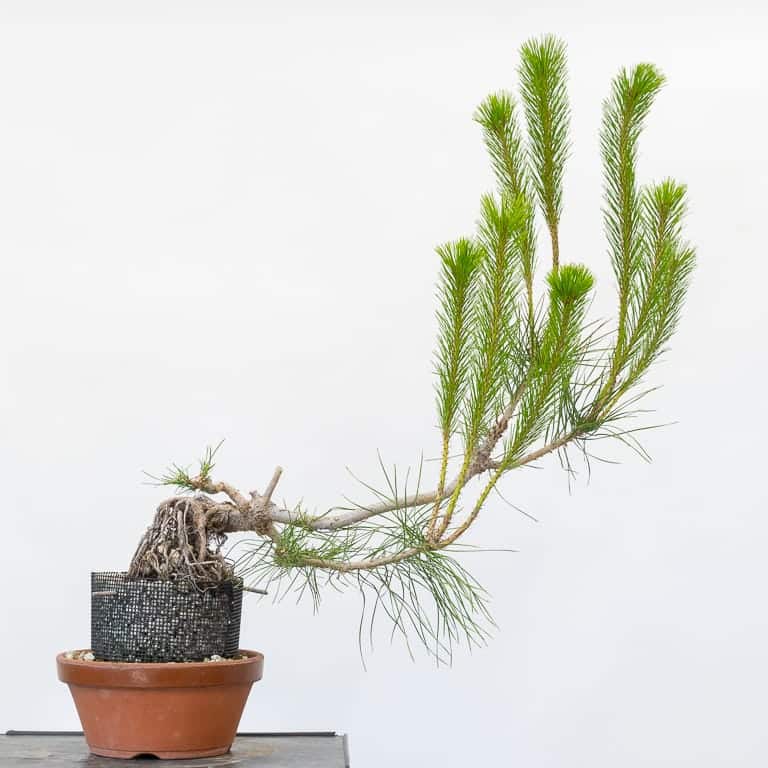
After pruning – 26″
As you can see from a close-up, I kept very little foliage where the future primary branches will develop.
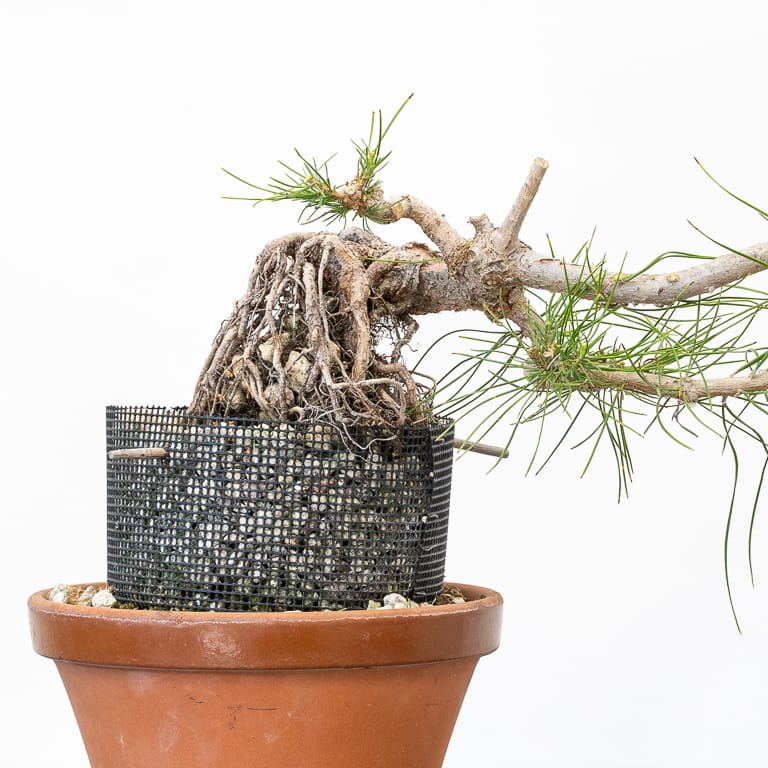
Close-up showing the area where the primary branches will grow
Here’s the same process on an exposed root black pine in training.
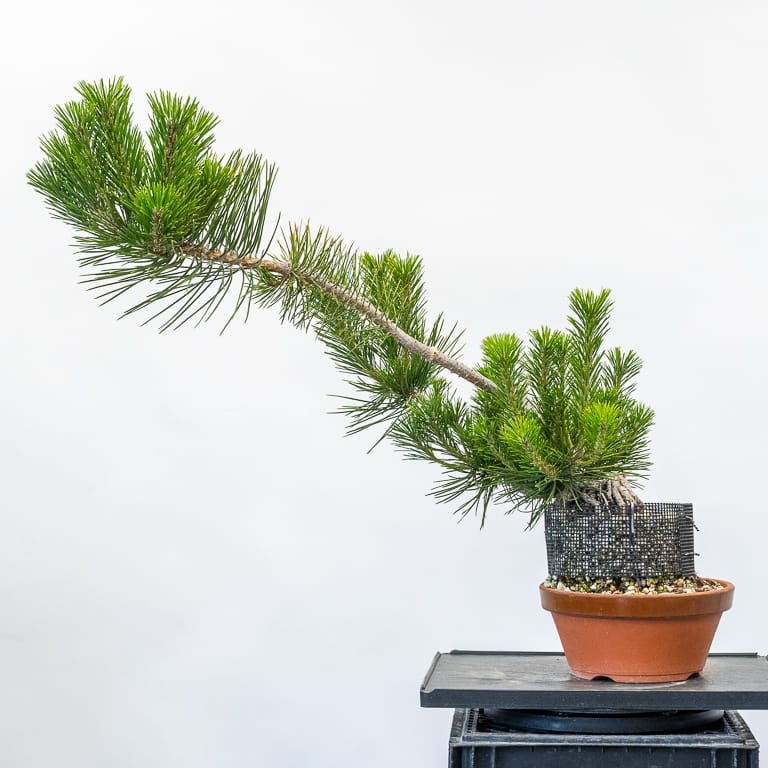
Black pine
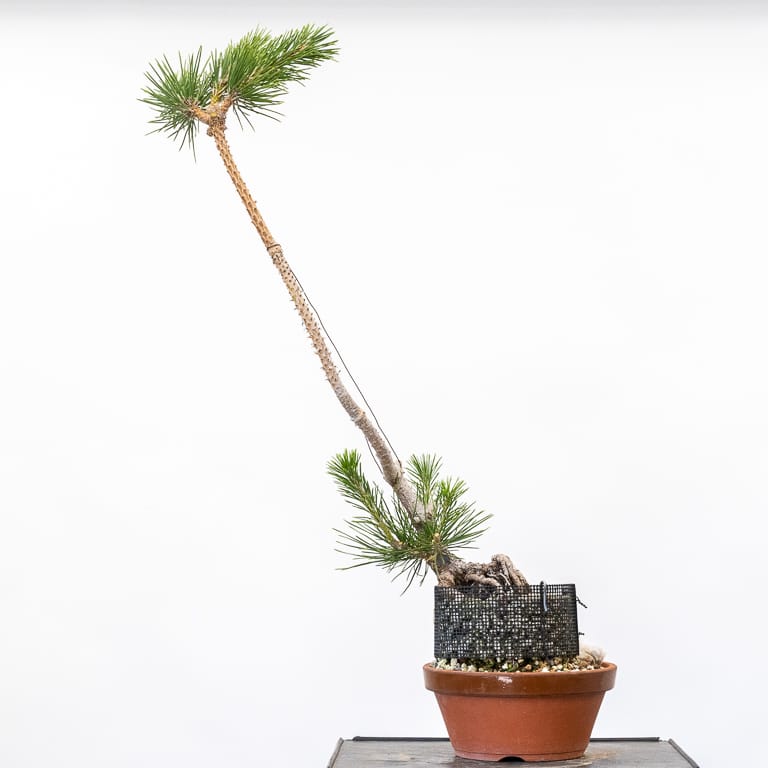
After pruning – 28″
I removed more of the sacrifice branches on this tree because many pointed downwards after pulling the trunk closer to vertical. By keeping the main sacrifice branch upright, the tree takes up less space.
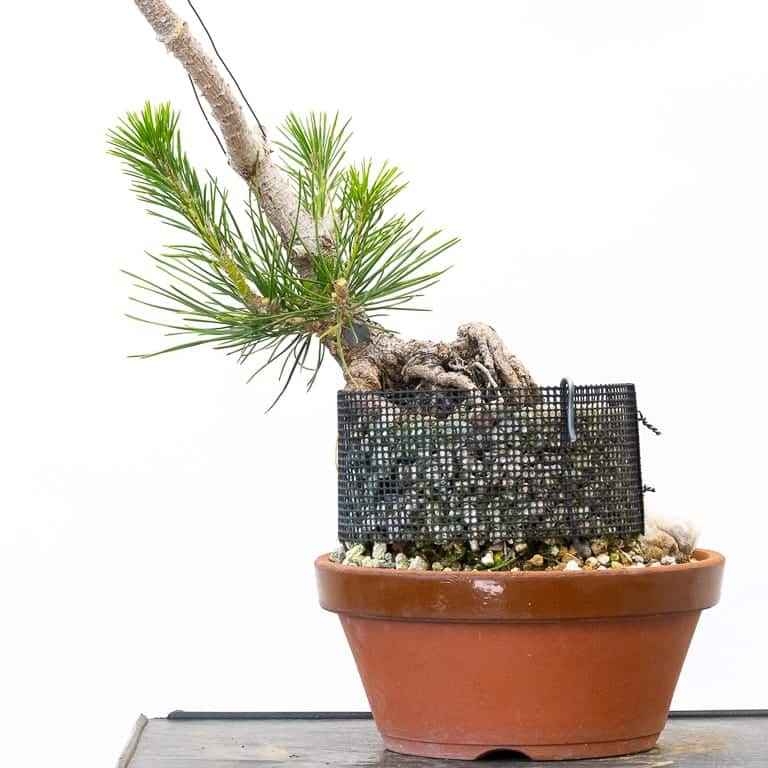
Close-up showing the future primary branches
I keep different numbers of sacrifice branches depending on how a tree grew the previous season. Here’s an example of a tree with three small sacrifice branches.
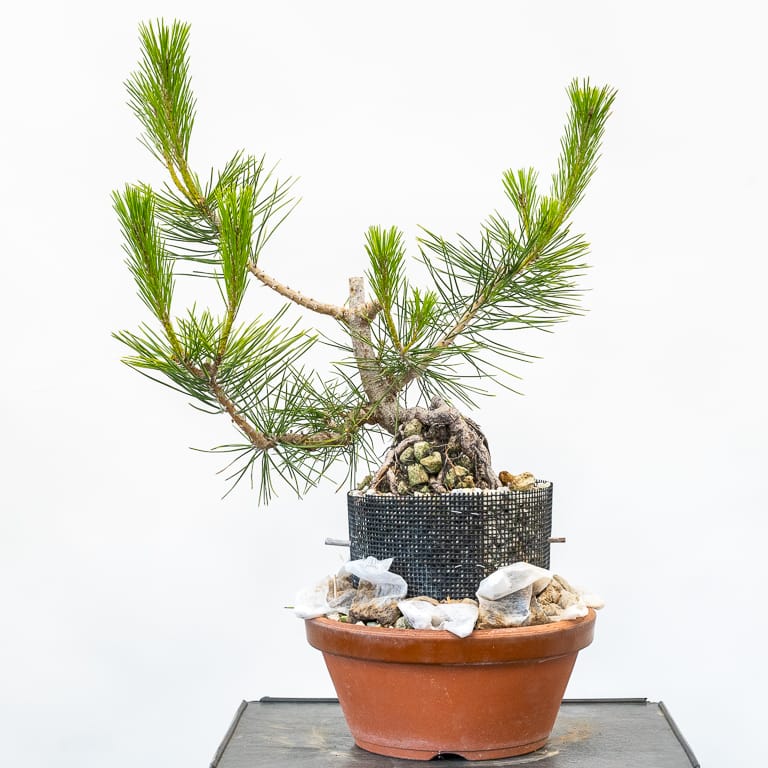
Red pine with three sacrifice branches – 21″
I’ve always enjoyed this work as it’s quick and it provides a window into the future design of the tree. I do similar work on all of my five-to-ten year old pines this time of year, whether or not they are being trained in the exposed root style.
And unlike my refined pines, these younger trees will receive fertilizer throughout summer. While it’s common to stop fertilizing pines that have been decandled, internode length isn’t a major concern at this point so I make sure these trees get lots of fertilizer to keep them healthy and encourage rapid growth.
Subscribe to Bonsai Tonight
New Posts Delivered Every Tuesday and Friday
Richard Dorfman says
Another valuable lesson. Thank you Jonas.
Jonas Dupuich says
Thanks, Richard!
Tia says
Hi Jonas,
Regarding sacrifice branches, is it the same philosophy that you use for deciduous trees? I have a few trees I want the trunk to thicken on, and I have several sacrifice branches. I also have a couple of trees that I am letting all the branches grow as long as they can. I wire the branches as they come out of the trunk to get them to hold the general shape I’m going to look for in the future. An y guidance on doing on deciduous sacrifice branches at this time of year?
Tia
Jonas Dupuich says
Hi, Tia! Yes, the basic approach is the same for sacrifice branches on deciduous bonsai. Here’s an example of this work on a trident maple in a similar stage of development: https://bonsaitonight.com/2019/07/19/developing-field-grown-trident-maple-taking-the-next-step/
steve perea says
Jonas, why thin the sacrifice branch at all?
Jonas Dupuich says
More than anything, to keep the tree from tipping over and to make space on the bench. If I’d placed the tree in a larger pot over winter (or if I did this now) I could let the sacrifice branches grow freely without the tree falling over or drying out all the time.
Gary McCarthy says
When the sacrifice branch has done it’s job when is the best time of the year to remove it?
Jonas Dupuich says
More often than not, I remove sacrifice branches incrementally which reduces the effect on the rest of the tree. I’d guess I do most of the removal at the beginning of the growing season or the end of the season. I often reduce sacrifice branches mid-season.
Gary McCarthy says
So, basically whenever :o)
Thanks!